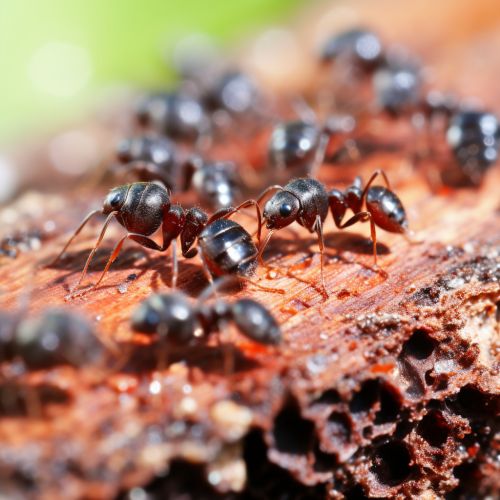Evolution of Eusociality in Insects
Introduction
Eusociality, a complex form of social organization, is characterized by cooperative brood care, overlapping generations within a colony of adults, and a division of labor into reproductive and non-reproductive groups. This social structure is most commonly observed in insects, particularly in the orders Hymenoptera (ants, bees, and wasps) and Isoptera (termites). The evolution of eusociality in insects is a topic of significant scientific interest and has been the subject of extensive research.


Evolutionary Origins
The evolutionary origins of eusociality in insects remain a subject of debate and ongoing research. The most widely accepted theory is the kin selection theory, proposed by W.D. Hamilton. According to this theory, eusociality evolved because it increases the inclusive fitness of individuals, that is, the number of copies of their genes passed on through relatives. This theory is supported by the fact that in many eusocial insect species, such as honeybees and ants, workers are more closely related to their sisters than they would be to their own offspring.
Mechanisms of Eusociality
Eusociality in insects is characterized by several key mechanisms, including cooperative brood care, division of labor, and overlapping generations. Cooperative brood care involves adult individuals within a colony caring for the offspring of others. Division of labor refers to the differentiation of individuals into reproductive and non-reproductive castes. Overlapping generations occur when offspring remain in their natal colony and care for subsequent generations, rather than dispersing and starting their own colonies.
Evolution of Eusociality in Different Insect Orders
- Hymenoptera
In Hymenoptera, which includes ants, bees, and wasps, eusociality is thought to have evolved multiple times independently. The evolution of eusociality in this order is often associated with the haplodiploid sex determination system, where males develop from unfertilized eggs and are haploid, while females develop from fertilized eggs and are diploid. This system results in a high degree of relatedness among sisters, which is thought to favor the evolution of eusociality.
- Isoptera
In Isoptera, or termites, eusociality is thought to have evolved once in the common ancestor of all modern termites. Unlike Hymenoptera, termites have a diploid sex determination system, similar to that of humans. Despite this, they exhibit a high degree of eusociality, with complex caste systems and cooperative brood care.
- Coleoptera
Eusociality is rare in the order Coleoptera (beetles), but it does occur in a few species. The evolution of eusociality in beetles is not well understood, but it is thought to be associated with ecological factors such as limited nesting sites or food resources.
Evolutionary Advantages and Disadvantages
Eusociality provides several evolutionary advantages, such as increased efficiency in foraging, defense against predators, and care for offspring. However, it also has potential disadvantages, including increased competition for resources within the colony and vulnerability to diseases and parasites that can spread rapidly in densely populated colonies.
Future Directions in Research
Future research on the evolution of eusociality in insects is likely to focus on understanding the genetic and epigenetic mechanisms underlying this complex social behavior, as well as the ecological and evolutionary factors that favor its emergence and maintenance.
